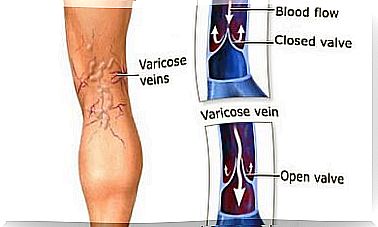Open-angle Glaucoma: What Does It Mean?

Open-angle glaucoma is an eye disease that can lead to blindness. It causes damage to the optic nerve, causing loss of vision in the visual field. In many cases, it causes an eye pressure in the eye, but not always.
Although there are both open-angle and closed-angle glaucoma, the former is more common. Experts estimate that it covers over 90% of cases. It is the second or fourth cause of blindness in the world depending on the area.
Open-angle glaucoma is also called primary or chronic glaucoma. It is a progressive disorder that may not cause symptoms and therefore may go unnoticed.
The possible causes of open-angle glaucoma
In most cases, open-angle glaucoma occurs when the drainage channels of the eye become blocked. This leads to increased pressure in the eye and damage to the optic nerve.
The eye’s drainage system forms an angle from the iris to the cornea. From there, it is connected to the outside with wires. This disorder does not allow for proper drainage because the ducts are either blocked or too narrow.
Since the fluid is not drained, the pressure in the eye increases, which damages the optic nerve. The patient’s ability to see is therefore affected.
Some optic nerves are more vulnerable to pressure in the eye. Africans have a higher risk of developing this disease as well as people over 60 years of age, especially those of Latin American descent with a family history of this disorder or people suffering from diabetes.

Primary symptoms
Open-angle glaucoma develops very slowly and quietly. In most cases, people become aware that something is wrong when they suffer from vision loss. By that time, the optic nerve is already badly damaged.
Those affected by it first lose their peripheral and lateral vision. The disease only affects the sharpness and accuracy of vision when it is highly developed. This disorder is usually detected by routine check-ups.
Diagnosis of open-angle glaucoma
Open-angle glaucoma should preferably be detected early before the damage to the optic nerve has progressed. Regular examinations of the eye are the test that can be used to diagnose it. Those belonging to the risk groups should receive regular examinations.
It is best to increase the frequency based on age, as follows:
- Before the age of 40: A study every two to four years.
- Aged 40-54: Once a year or every three years.
- 55-64: Once a year or every other year.
- Over 65 years: Once every six months or once a year.
Experts may ask for various tests to determine if a person is suffering from open-angle glaucoma. The most common are the following:
- Test with tonometer: This test measures the pressure in the eye.
- Ophthalmoscope test: Doctors use it to look into the back of the eye and examine the optic nerve to assess possible damage.
- Perimetry: A test of the field of view. It allows physicians to determine if and to what extent open-angle glaucoma has affected the patient’s vision.
- Gonioscopy: It determines whether the angle between the iris and the cornea is open and wide or narrow and closed.
- Pacymetry: This study measures the thickness of the cornea of the eye.
Ophthalmologists can ask for all of these tests or just a few of them. Open-angle glaucoma is not always easy to diagnose.
Treatment options

Treatment of open-angle glaucoma focuses on reducing the pressure in the eye. There is no way to repair the damage to the optic nerve. This is why early diagnosis and treatment are so important.
There are three strategies for treatment:
- Medications, usually eye drops: They cause the eyes to produce less fluid or increase the drainage of the fluid.
- Laser surgery : This type of surgery helps the eye to better drain fluid and reduce the production of fluid in the eye. It is an outpatient treatment that is typically effective in reducing the pressure in the eye.
- Traditional surgery: In this case, the doctor redirects the fluid to avoid the part of the drainage system that is not working. Surgeons can also make new drainage channels.
Open-angle glaucoma is not always treated in the same way
The choice of treatment depends on the condition of the optic nerve and the overall health of the patient. The ophthalmologist will talk to them about the benefits of each alternative and will recommend the most appropriate treatment depending on the patient’s case.
In many cases, patients undergoing laser surgery or regular surgery may need to take medication afterwards. The positive effects of surgery can also be minimized over time.









